-
 Bitcoin
Bitcoin $106,754.6083
1.33% -
 Ethereum
Ethereum $2,625.8249
3.80% -
 Tether USDt
Tether USDt $1.0001
-0.03% -
 XRP
XRP $2.1891
1.67% -
 BNB
BNB $654.5220
0.66% -
 Solana
Solana $156.9428
7.28% -
 USDC
USDC $0.9998
0.00% -
 Dogecoin
Dogecoin $0.1780
1.14% -
 TRON
TRON $0.2706
-0.16% -
 Cardano
Cardano $0.6470
2.77% -
 Hyperliquid
Hyperliquid $44.6467
10.24% -
 Sui
Sui $3.1128
3.86% -
 Bitcoin Cash
Bitcoin Cash $455.7646
3.00% -
 Chainlink
Chainlink $13.6858
4.08% -
 UNUS SED LEO
UNUS SED LEO $9.2682
0.21% -
 Avalanche
Avalanche $19.7433
3.79% -
 Stellar
Stellar $0.2616
1.64% -
 Toncoin
Toncoin $3.0222
2.19% -
 Shiba Inu
Shiba Inu $0.0...01220
1.49% -
 Hedera
Hedera $0.1580
2.75% -
 Litecoin
Litecoin $87.4964
2.29% -
 Polkadot
Polkadot $3.8958
3.05% -
 Ethena USDe
Ethena USDe $1.0000
-0.04% -
 Monero
Monero $317.2263
0.26% -
 Bitget Token
Bitget Token $4.5985
1.68% -
 Dai
Dai $0.9999
0.00% -
 Pepe
Pepe $0.0...01140
2.44% -
 Uniswap
Uniswap $7.6065
5.29% -
 Pi
Pi $0.6042
-2.00% -
 Aave
Aave $289.6343
6.02%
Should I sell if the moving average suppresses obviously? How to operate?
Moving average suppression occurs when a cryptocurrency's price consistently trades below key MAs like the 50 or 200-day, signaling strong selling pressure and weak buying momentum.
Jun 17, 2025 at 11:07 am

Understanding Moving Average Suppression in Cryptocurrency Trading
In the realm of cryptocurrency trading, technical analysis plays a pivotal role in decision-making. One of the most widely used tools is the moving average (MA), which helps traders identify trends and potential reversal points. When prices are consistently below a key moving average, such as the 50-day or 200-day MA, this phenomenon is known as moving average suppression.
The core idea behind this concept lies in the psychological behavior of market participants. If a cryptocurrency's price struggles to rise above its moving average, it signals that sellers dominate the market, and buyers are hesitant to push prices higher. This kind of pattern can be observed across various timeframes — from intraday charts to weekly ones.
Identifying Clear Signs of Suppression
To determine whether moving average suppression is occurring, traders should look for specific chart patterns:
- The price remains consistently below the moving average line for an extended period.
- Bounces toward the MA are quickly rejected, often with strong bearish candles.
- Volume during rallies is weaker compared to volume during declines.
- There may be multiple failed attempts to break above the MA, each followed by a new low.
For example, if Bitcoin has been trading below its 50-day MA for weeks and every attempt to move above it results in sharp selling pressure, this could indicate strong resistance at that level and a possible continuation of the downtrend.
Why Suppression Matters for Selling Decisions
When a cryptocurrency shows clear signs of moving average suppression, it suggests that the asset lacks buying momentum. In such cases, holding onto a position might expose traders to further downside risk. This is especially true when other indicators like Relative Strength Index (RSI) or MACD confirm weakness.
Traders who recognize this pattern early can consider taking partial profits or exiting entirely, depending on their risk tolerance. It’s important to note that suppression doesn’t always mean immediate capitulation; sometimes, consolidation occurs before a major breakdown.
How to Operate During Moving Average Suppression
If you're facing a scenario where a crypto asset is clearly underperforming relative to its moving average, here’s how to approach your trade:
- Confirm the trend using multiple timeframes: Check daily, 4-hour, and 1-hour charts to ensure suppression is consistent across all levels.
- Use candlestick patterns for confirmation: Look for bearish engulfing patterns or dark cloud covers near the MA to strengthen your sell signal.
- Place stop-loss orders strategically: If you’re still holding, place a stop-loss just above the recent swing high to protect against sudden reversals.
- Consider short-selling opportunities: For advanced traders, suppression can offer a chance to profit from falling prices by entering short positions after confirmation.
- Monitor volume and order book depth: A drop in volume during rallies and increased sell pressure on the order book can reinforce the suppression signal.
Each step must be executed with precision to avoid false signals and emotional trading decisions.
Using Technical Indicators to Support Your Decision
While moving averages alone can provide valuable insights, combining them with other technical indicators enhances accuracy:
- RSI (Relative Strength Index): If RSI is trending lower and fails to reach overbought territory (above 70), it confirms weak bullish momentum.
- MACD (Moving Average Convergence Divergence): A bearish crossover or declining histogram values align with suppression patterns.
- Bollinger Bands: Prices hugging the lower band while the MA acts as resistance can highlight continued downward pressure.
By layering these tools, traders gain a more comprehensive view of whether selling pressure will persist or if a bounce is likely.
Practical Example: Ethereum Under 50-Day MA
Let’s take a real-world scenario. Suppose Ethereum (ETH) has been trading below its 50-day MA for several weeks. Each time the price tries to rally toward the MA, it gets met with heavy selling. You notice the following on the chart:
- ETH closes multiple times below the 50-day MA.
- Every rally is met with rejection, forming lower highs and lower lows.
- Volume spikes during drops but fades during attempted recoveries.
- RSI stays below 50, showing no sign of strength.
Given this setup, selling becomes a logical option. You might decide to sell half your position immediately and wait for a retest of support levels before deciding on the rest.
Frequently Asked Questions
Q: Can moving average suppression occur in both uptrends and downtrends?
Yes, although it’s more commonly associated with downtrends. In an uptrend, temporary suppression might happen during consolidations, but sustained suppression usually signals weakening momentum.
Q: What timeframes are best for identifying suppression?
Daily and 4-hour charts are ideal for spotting medium-term suppression. Shorter timeframes like 1-hour charts can help with entry timing but may produce more noise.
Q: Should I always sell when suppression is present?
Not necessarily. It depends on your strategy, risk profile, and whether other indicators confirm the suppression. Some traders use it as a signal to tighten stops rather than sell outright.
Q: How long does moving average suppression typically last?
There’s no fixed duration. It can last days or even weeks. The longer the suppression persists without a breakout, the stronger the bearish bias becomes.
Disclaimer:info@kdj.com
The information provided is not trading advice. kdj.com does not assume any responsibility for any investments made based on the information provided in this article. Cryptocurrencies are highly volatile and it is highly recommended that you invest with caution after thorough research!
If you believe that the content used on this website infringes your copyright, please contact us immediately (info@kdj.com) and we will delete it promptly.
- 2025-W Uncirculated American Gold Eagle and Dr. Vera Rubin Quarter Mark New Products
- 2025-06-13 06:25:13
- Ruvi AI (RVU) Leverages Blockchain and Artificial Intelligence to Disrupt Marketing, Entertainment, and Finance
- 2025-06-13 07:05:12
- H100 Group AB Raises 101 Million SEK (Approximately $10.6 Million) to Bolster Bitcoin Reserves
- 2025-06-13 06:25:13
- Galaxy Digital CEO Mike Novogratz Says Bitcoin Will Replace Gold and Go to $1,000,000
- 2025-06-13 06:45:13
- Trust Wallet Token (TWT) Price Drops 5.7% as RWA Integration Plans Ignite Excitement
- 2025-06-13 06:45:13
- Ethereum (ETH) Is in the Second Phase of a Three-Stage Market Cycle
- 2025-06-13 07:25:13
Related knowledge
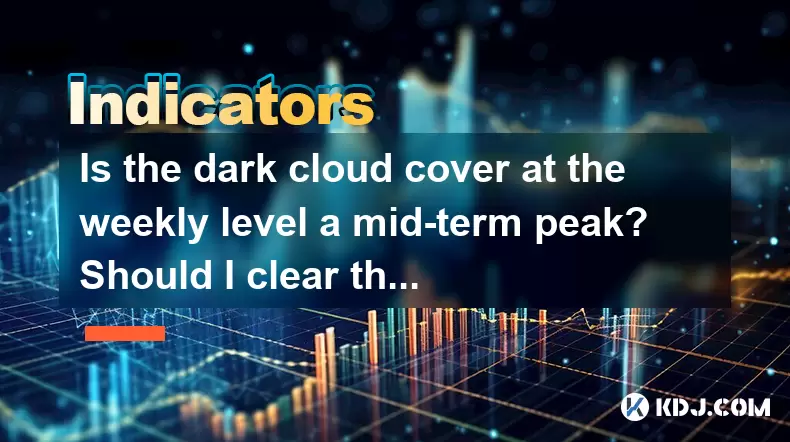
Is the dark cloud cover at the weekly level a mid-term peak? Should I clear the position?
Jun 17,2025 at 02:21pm
Understanding the Dark Cloud Cover PatternThe Dark Cloud Cover is a well-known candlestick pattern used by technical analysts to identify potential trend reversals from bullish to bearish. It typically forms at the end of an uptrend and consists of two candles: the first is a strong bullish (green) candle, followed by a bearish (red) candle that opens h...
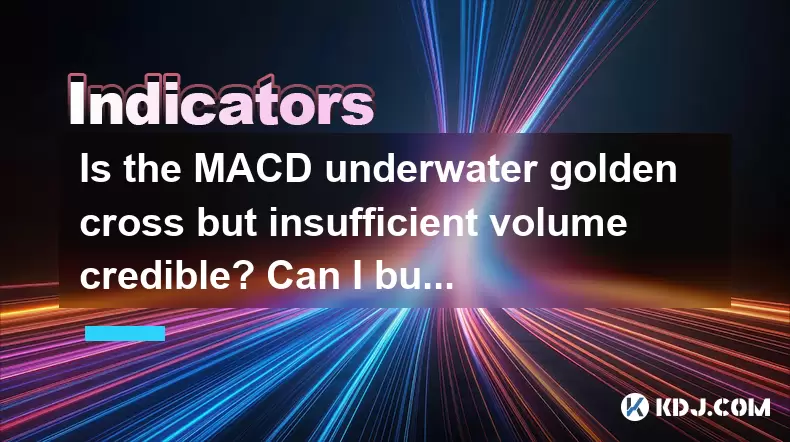
Is the MACD underwater golden cross but insufficient volume credible? Can I buy at the bottom?
Jun 17,2025 at 03:08pm
Understanding the MACD Underwater Golden CrossThe MACD underwater golden cross occurs when the MACD line crosses above the signal line below the zero line, signaling a potential reversal from a downtrend to an uptrend. This phenomenon is often interpreted by traders as a bullish signal, especially in cryptocurrency markets where momentum plays a signifi...
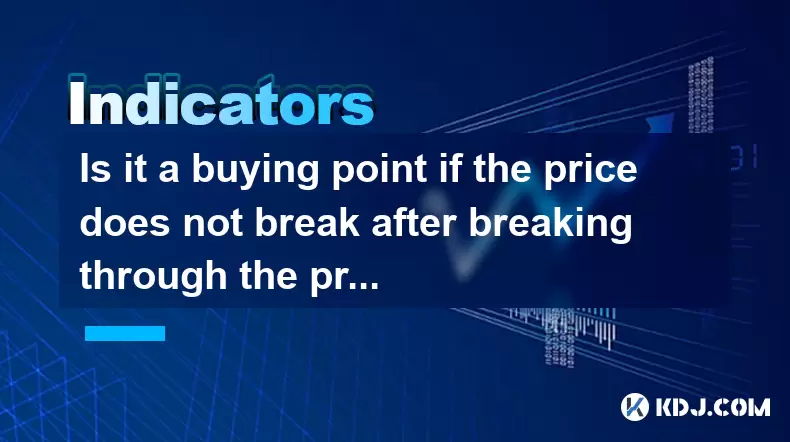
Is it a buying point if the price does not break after breaking through the previous high? How to confirm?
Jun 17,2025 at 01:22pm
Understanding Price Behavior After Breaking Previous HighsWhen analyzing cryptocurrency price charts, traders often look for breakouts as potential signals for new trends. A common question among traders is whether a non-breakdown after breaking through a previous high indicates a buying opportunity. To answer this, it's essential to understand the psyc...
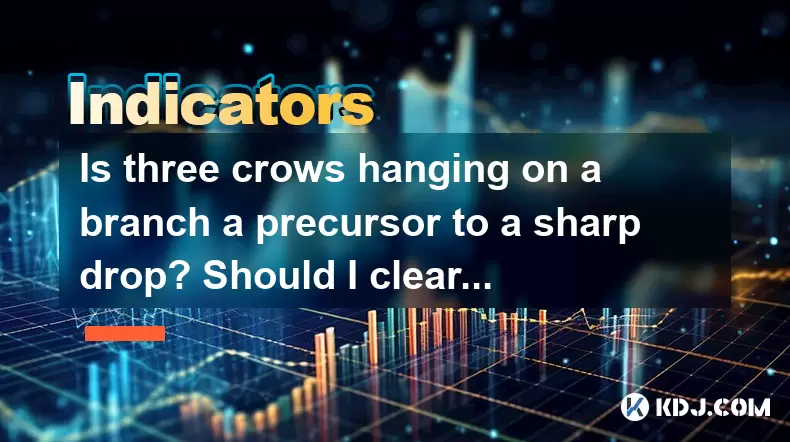
Is three crows hanging on a branch a precursor to a sharp drop? Should I clear my position?
Jun 17,2025 at 12:50pm
What Does 'Three Crows Hanging on a Branch' Mean in Crypto Trading?In technical analysis, the 'three crows hanging on a branch' is a candlestick pattern that often signals a potential reversal from an uptrend to a downtrend. This pattern typically appears after a period of rising prices and consists of three consecutive bearish (red) candles with progre...
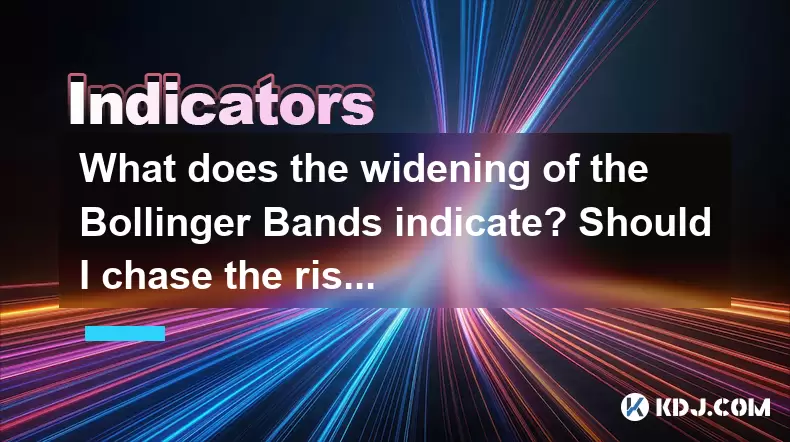
What does the widening of the Bollinger Bands indicate? Should I chase the rise or leave the market?
Jun 17,2025 at 02:28pm
Understanding Bollinger Bands and Their SignificanceBollinger Bands are a widely used technical analysis tool in cryptocurrency trading. They consist of a moving average (typically a 20-day simple moving average) with two standard deviation lines plotted above and below it. These bands dynamically adjust to price volatility, expanding when volatility in...
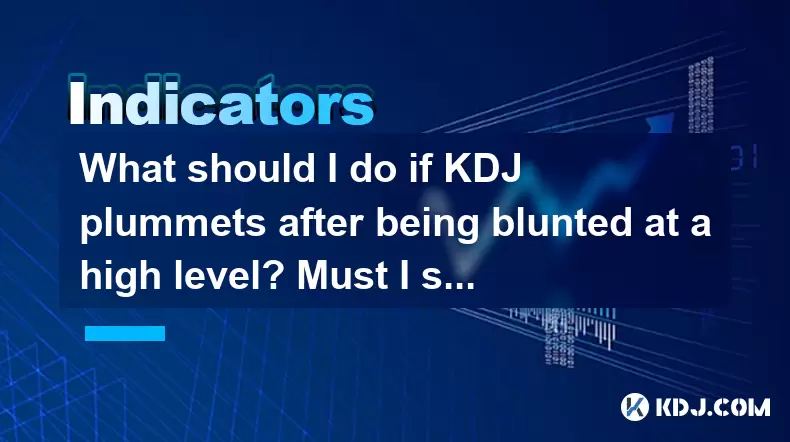
What should I do if KDJ plummets after being blunted at a high level? Must I stop loss?
Jun 17,2025 at 12:01pm
Understanding KDJ Indicator Dynamics in Cryptocurrency TradingThe KDJ indicator, also known as the stochastic oscillator, is a momentum-based tool used to identify overbought and oversold conditions in financial markets, including cryptocurrency. It consists of three lines: the %K line (fast stochastic), the %D line (slow stochastic), and the %J line (d...

Is the dark cloud cover at the weekly level a mid-term peak? Should I clear the position?
Jun 17,2025 at 02:21pm
Understanding the Dark Cloud Cover PatternThe Dark Cloud Cover is a well-known candlestick pattern used by technical analysts to identify potential trend reversals from bullish to bearish. It typically forms at the end of an uptrend and consists of two candles: the first is a strong bullish (green) candle, followed by a bearish (red) candle that opens h...

Is the MACD underwater golden cross but insufficient volume credible? Can I buy at the bottom?
Jun 17,2025 at 03:08pm
Understanding the MACD Underwater Golden CrossThe MACD underwater golden cross occurs when the MACD line crosses above the signal line below the zero line, signaling a potential reversal from a downtrend to an uptrend. This phenomenon is often interpreted by traders as a bullish signal, especially in cryptocurrency markets where momentum plays a signifi...

Is it a buying point if the price does not break after breaking through the previous high? How to confirm?
Jun 17,2025 at 01:22pm
Understanding Price Behavior After Breaking Previous HighsWhen analyzing cryptocurrency price charts, traders often look for breakouts as potential signals for new trends. A common question among traders is whether a non-breakdown after breaking through a previous high indicates a buying opportunity. To answer this, it's essential to understand the psyc...

Is three crows hanging on a branch a precursor to a sharp drop? Should I clear my position?
Jun 17,2025 at 12:50pm
What Does 'Three Crows Hanging on a Branch' Mean in Crypto Trading?In technical analysis, the 'three crows hanging on a branch' is a candlestick pattern that often signals a potential reversal from an uptrend to a downtrend. This pattern typically appears after a period of rising prices and consists of three consecutive bearish (red) candles with progre...

What does the widening of the Bollinger Bands indicate? Should I chase the rise or leave the market?
Jun 17,2025 at 02:28pm
Understanding Bollinger Bands and Their SignificanceBollinger Bands are a widely used technical analysis tool in cryptocurrency trading. They consist of a moving average (typically a 20-day simple moving average) with two standard deviation lines plotted above and below it. These bands dynamically adjust to price volatility, expanding when volatility in...

What should I do if KDJ plummets after being blunted at a high level? Must I stop loss?
Jun 17,2025 at 12:01pm
Understanding KDJ Indicator Dynamics in Cryptocurrency TradingThe KDJ indicator, also known as the stochastic oscillator, is a momentum-based tool used to identify overbought and oversold conditions in financial markets, including cryptocurrency. It consists of three lines: the %K line (fast stochastic), the %D line (slow stochastic), and the %J line (d...
See all articles

























































































